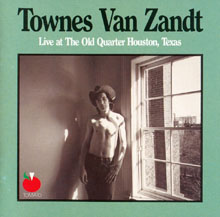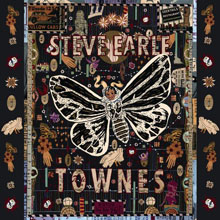These days, the most likely place you'll come across this tune is in bluegrass circles, where it is now something of a standard. Right around the time that 1973 Townes recording was made, those circles were being widened considerably by a crop of young upstarts. This 2nd generation of bluegrass musicians had, for the most part, great respect for their elders and for the musical trail they had blazed. But where Bill Monroe always performed in a suit, these kids showed up wearing any old thing. Where Lester Flatt would go mod by letting his sideburns grow another inch, the new breed could have passed for the cast of Hair. And where the first-gen bluegrassers tended to draw largely upon the themes and musical memes of pure mountain music and country blues, the up-and-comers brought in elements of rock & roll, jazz, blues and popular music of the day. The times they were a changin', ya'll.
 |
What these young bucks had in common with the old folks at home—and this would ultimately win them welcome—was serious musical chops. No group better personifies all these trends than the one that gave this new brand of bluegrass a name: the New Grass Revival. ("Newgrass" has also been called "Progressive Bluegrass.") Formed in 1972 by former members of the Bluegrass Alliance, by the early 80's the band included this formidable foursome: Sam Bush, John Cowan, Pat Flynn and Béla Fleck. In the audio clip that follows from their 1984 Live recording, Pat Flynn is first featured on guitar, then Béla after the vocals. That white freightliner is in high gear and careening downhill on this one. Buckle up and hold on tight!
Audio clip: New Grass Revival, 1984, Live
While we're walking among musical gender-benders we might as well pay a visit to Townes van Zandt's best known protégé, Steve Earle. The two met when Earle was just a teen and the elder TVZ served him as a friend, mentor and a living cautionary tale of roads-best-not-taken. (Not that that stopped Earle from eventually mozying down several, though not quite to the bitter end Townes found at only 52 years old.)
In 2009 Earle released Townes in tribute. He includes White Freightliner among the selected favorites, rendering it again in a bluegrass style. This time, though, the throttle is back a couple notches. You can hear yourself taking a crack at this, can't you?
Audio Clip: Steve Earle, from Townes, 2009
Not everyone does the song as a bluegrass showpiece, however. Austin-based Porterdavis is likely playing some of the same small rooms that Van Zandt did back in the day. But they are rockin' the house with electric blues hopped up on harp. Sorta like what I imagine Texas sounds like in Chicago. Or the other way around. Either way, you could easily adapt this groove to acoustic guitar. So, do.
Audio Clip: Porterdavis on White Freightliner Blues
Lastly, we can't pass up an opportunity to give a tip of the cowboy hat to Gillian Welch and David Rawlings. They include the song among the cover tunes on The Reveator Collection, a mix of music videos and concert footage released on DVD in 2002. This cut is from a 2001 live performance. If you listen very closely to the begining you can hear Gillian using those hammer-ons we mentioned at the start of our tour. You can tell she's fingering the song in C (as we do) but capoed up three frets so it sounds in Eb, which gets it into her vocal range. I encourage any women singers in our midst to do the same, even at a jam. It's a fair challenge, a worthy goal, and a good skill for all of us to develop. Plus we love it when you sing.
Audio clip: Gillian Welch sings White Freighliner Blues, 2001




